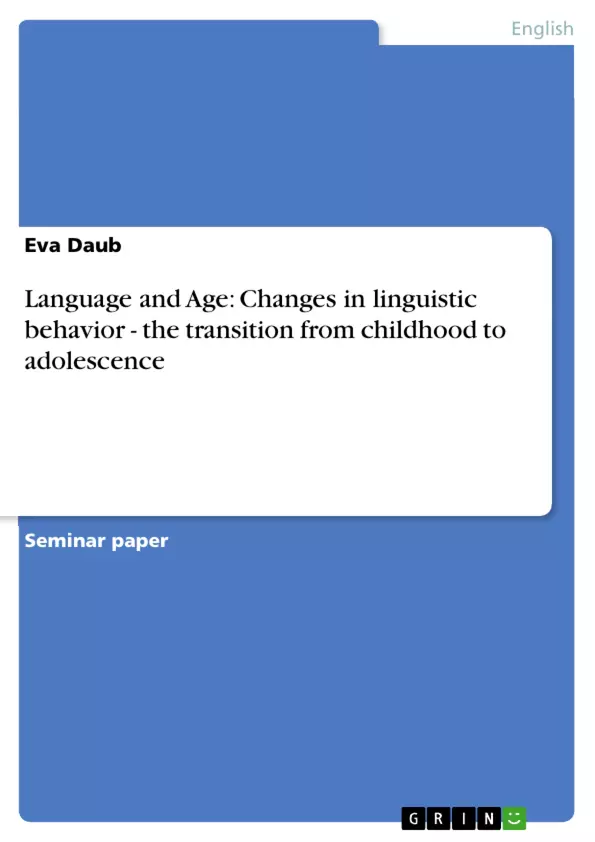Language is one of the most powerful emblems of social behavior. In the normal transfer of information through language, we use language to send vital social messages about who we are, where we come from, and who we associate with.
Since the 1960s, a number of sociolinguistic studies have been carried out to reveal the significance of the interplay between language variation and language change and the effects of social factors on the language of different speaker groups within a speech community. Regional variation and variation due to social class and gender differences have been much discussed in those studies.
To a lesser extent sociolinguists have focused on age, ethnicity and networks as social factors. In the following, I will try to describe such differences and the effects of age on the language of speaker groups, namely children and adolescents. I will deal with the linguistic characteristics of both age groups as a steady and continuous development rather than comparing both stages of life with each other.
[...]
Inhaltsverzeichnis (Table of Contents)
- Introduction
- Linguistic behavior in childhood
- Family and social class
- Language in School
- Gender-based differences
- Peer talk
- Adolescence
- Age-grading and language change
- Conclusion
Zielsetzung und Themenschwerpunkte (Objectives and Key Themes)
This paper examines the relationship between language variation and age, focusing on the linguistic development of children and adolescents. The author aims to describe the effects of age on language use, particularly in relation to family, school, gender, and peer groups. The study explores the linguistic characteristics of these age groups as a continuous developmental process, rather than comparing them directly.
- The impact of social factors on language variation
- The role of family and social class in shaping children's language
- The influence of school and peer groups on adolescent language
- The development of linguistic competence in childhood and adolescence
- Age-grading and language change in adolescence
Zusammenfassung der Kapitel (Chapter Summaries)
- Introduction: The introduction highlights the importance of language as a social marker and discusses the role of sociolinguistics in understanding language variation and change. The author focuses on the influence of age, particularly the transition from childhood to adolescence.
- Linguistic behavior in childhood: This chapter explores the development of language during childhood, highlighting the influence of family, school, gender, and peer groups. It emphasizes the importance of early childhood experiences in shaping linguistic competence.
- Family and social class: This section examines the impact of social class on children's language development, drawing on studies that demonstrate the correlation between social status and linguistic variation. The author discusses the role of caregiver models and the influence of vernacular language.
Schlüsselwörter (Keywords)
The primary focus of this paper is the interplay between language variation and age, specifically the transition from childhood to adolescence. Key terms include sociolinguistics, language change, social factors, language acquisition, vernacular, social class, peer group, and age-grading.
- Quote paper
- Eva Daub (Author), 2001, Language and Age: Changes in linguistic behavior - the transition from childhood to adolescence, Munich, GRIN Verlag, https://www.grin.com/document/5640



